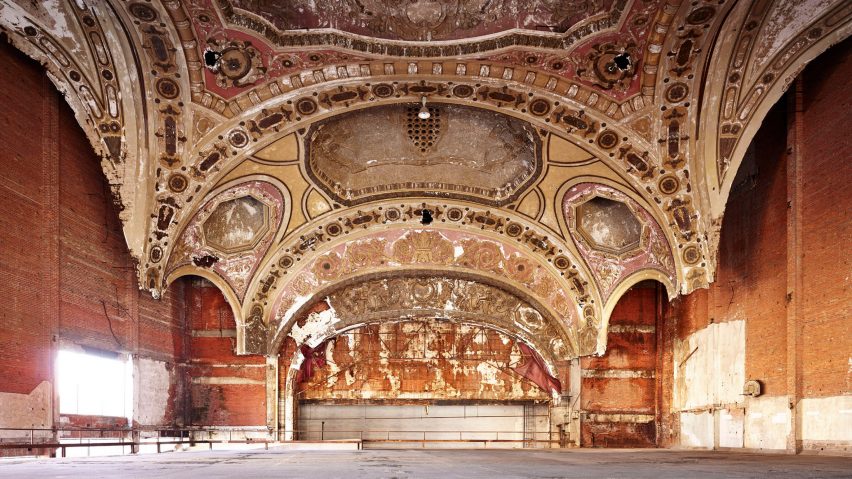
Philip Jarmain captures Detroit's abandoned and demolished art deco buildings
Canadian photographer Philip Jarmain has documented the early 20th-century buildings of Detroit that put the city on "par with New York, Chicago and Paris".
Jarmain started photographing the vacant public buildings in 2010 when their fate remained uncertain, due to a decline in Detroit's economy after the 2008 crash.
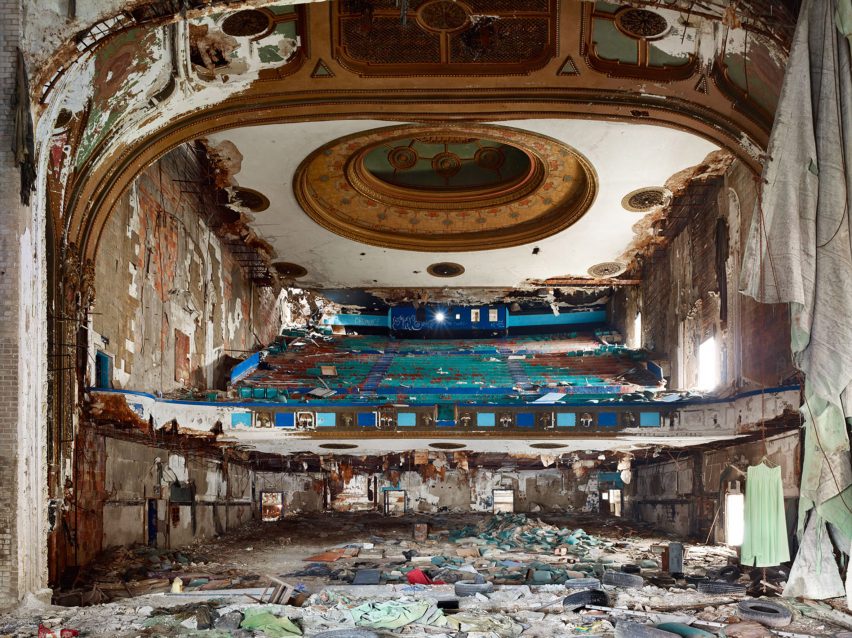
"At that time really significant pre-depression buildings were being destroyed at an unprecedented rate," Jarmain said. "They were falling victim to demolition, arson, or scrapping."
"It became apparent that they needed to be carefully documented before they were destroyed – there was some urgency to document these structures," he added. "Many have since been demolished or burned or collapsed."
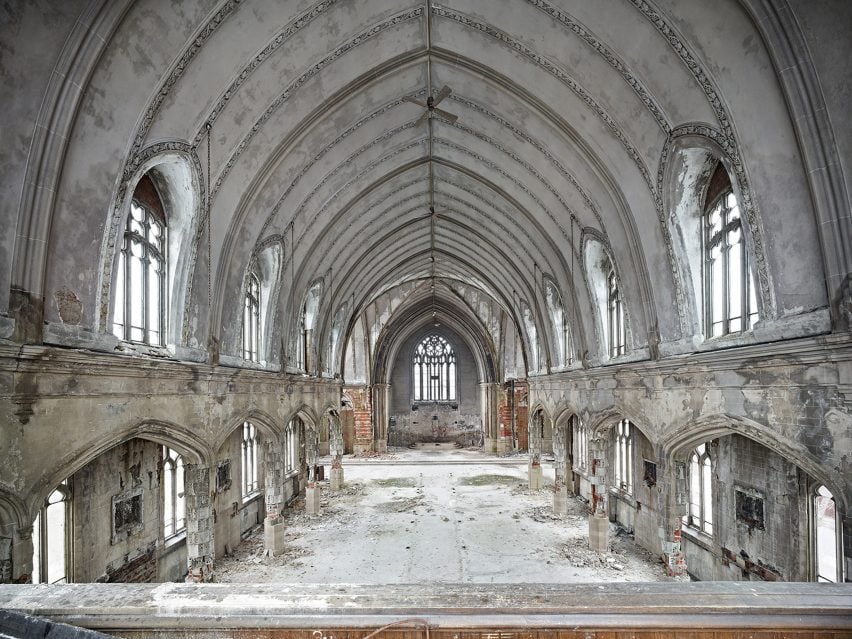
Many of the structures were completed at the turn of the 20th century in the decorative art deco and neoclassical styles, including St Agnes Church, Eastown Theatre and Lee Plaza Hotel. They represent an era of opulence in the city before the Great Depression in the 1930s.
"Detroit was known as 'The Paris of the Midwest' and its architecture was on par with New York, Chicago, and Paris," the photographer said. "It must have been so striking in the early 1900s."
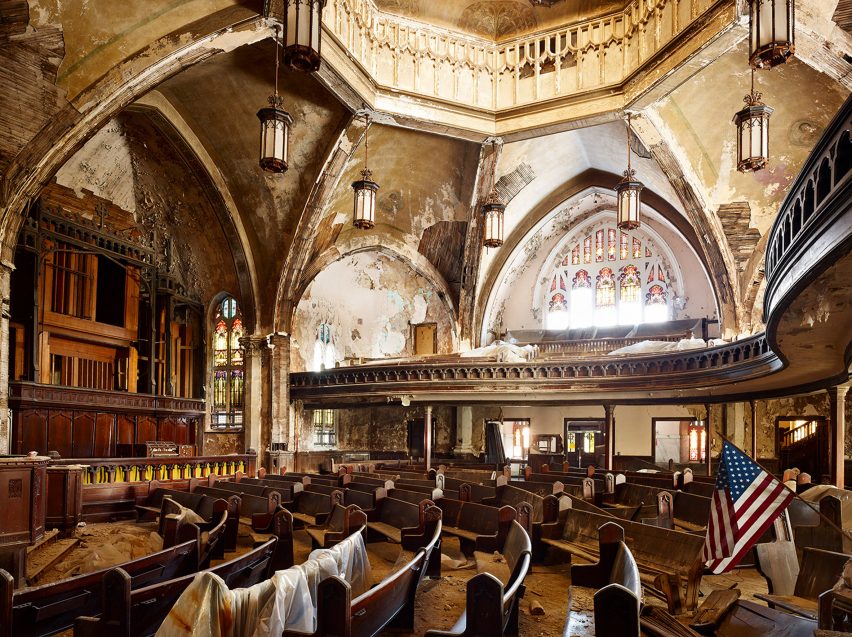
The photographer travelled to the city 14 times in the years following 2010 to gather a portfolio of 58 shots that he first presented in San Francisco 2013 to coincide with Detroit’s declaration of bankruptcy.
Jarmain is now fundraising to turned the series into American Beauty, The Opulent Pre-Depression Architecture of Detroit book. Read on for his description of the project:
My mother's side of the family is from Detroit. After the economic crash of 2008, Detroit was hit really hard and I was concerned. In 2010 I traveled to Detroit to check on the condition of the city for myself. At that time really significant pre-depression buildings were being destroyed at an unprecedented rate. They were falling victim to demolition, arson, or scrapping.
Studying the architecture of a city is a fascinating way to learn the history of a city
It became apparent that they needed to be carefully documented before they were destroyed – there was some urgency to document these structures. I then did about 14 trips to Detroit over a number of years to photograph buildings that I felt were significant. Many have since been demolished or burned or collapsed.
Studying the architecture of a city is a fascinating way to learn the history of a city: "architecture is the printing-press of all ages, and gives a history of the state of the society in which it was erected". I was embraced by Detroit locals who took me to every important building in this wounded but incredible city.
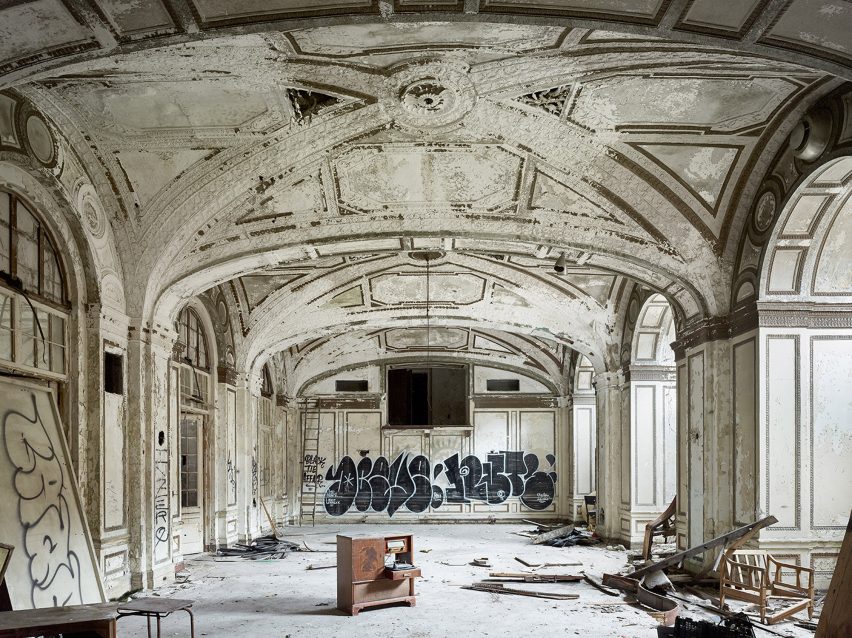
Sean Doerr, a local historian was 21 years old when I first met him. He had been passionately researching and documenting these structures since he was 13 years old and published his first book at age 17. Sean taught me so much about the architecture and the history of this city. He also helped with the research for this book American Beauty. I learned that there were some really passionate residents of the City of Detroit that felt that it was really important to share Detroit's story.
Detroit's architecture was on par with New York, Chicago and Paris
Detroit was known as "The Paris of the Midwest" and its architecture was on par with New York, Chicago, and Paris. It must have been so striking in the early 1900s. A city responsible for so much of the innovation in the 20th century. You also learned about the impacts of racism and "The white flight". The race riots in the late 1960s that the city perhaps never recovered from. Globalisation caused the closure of so many legendary factories.
However, Detroit declared bankruptcy in 2013 and a friend bought a few houses at that time for $2000 dollars each. But after this bankruptcy, you saw Detroit "rise from the ashes". Young entrepreneurs starting innovative small businesses that would bring new life to these old buildings.
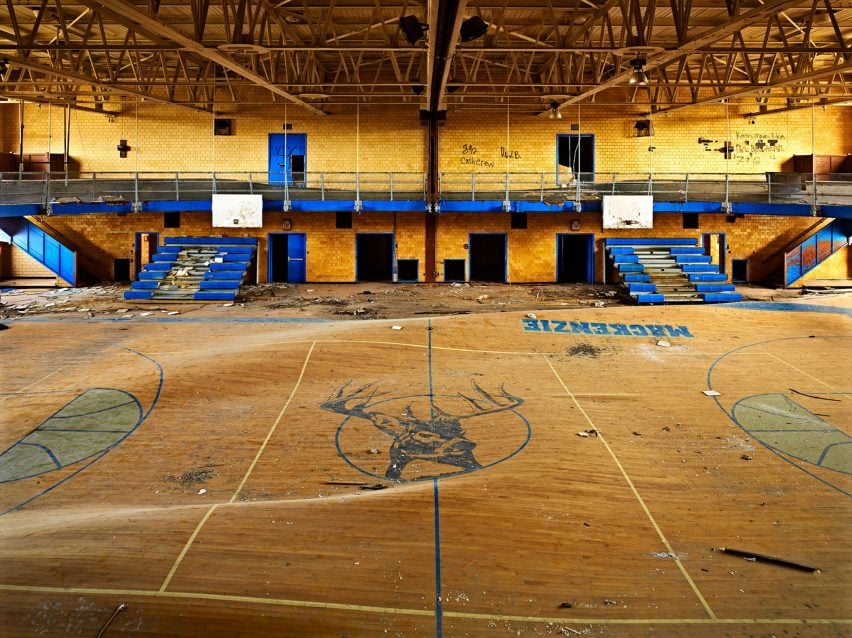
Incredible new bars and restaurants that had real character and were genuinely unique and of great quality. And some of the pre-depression architecture was finally starting to be restored after being vacant for decades.
I'm sure Covid 19 is affecting Detroit in a bad way currently but this is a hearty crowd of entrepreneurs – a resilient bunch.
Michigan Theatre is completely surreal
I have a number of favourite buildings but I will mention one in particular since it is completely accessible, so if you're visiting Detroit try to go and see it. It's Michigan Theatre, and you may recognise this interior because it was featured in the Eminem film 8 Mile. A massive opulent theatre from the early 1900s in downtown Detroit that was gutted and a three-level concrete parking garage was erected in the middle of the abandoned theatre. The original ornate ceiling is still intact directly above the car park. It is completely surreal.
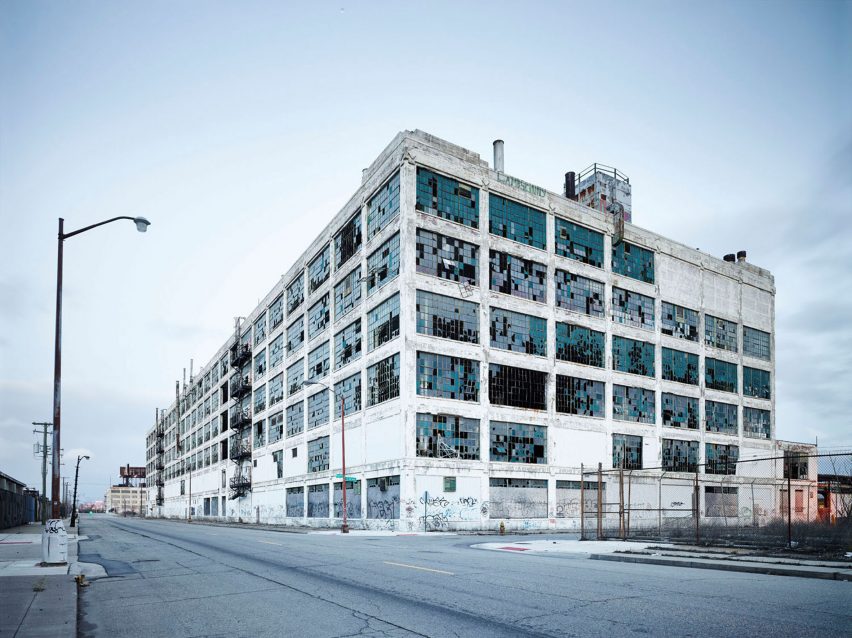
At times you felt concerned for your safety and for your camera equipment. Crime was very high and you would hear gunshots now and then. We never traveled alone and even sometimes would let police know when we were venturing into particularly dangerous areas. I think it has definitely improved and the downtown feels totally safe.
Joe Biden was Vice President he was visiting Detroit in 2012 for a conference, while I was also in the city, and he was staying at the Westin Book Cadillac hotel. The story goes that while his truck of security equipment was stolen from the hotel's parking lot.
It was important to me that the photographs have incredible clarity and detail
Detroit has come a long way since then I think it is a really outstanding city to visit for food and drink and the arts. Keep in mind the DIA, Detroit Institute of Arts, is in this city and has one of the most impressive art collections in the United States including the incredible Diego Rivera Murals.
This project was originally intended strictly for a fine art exhibition which opened in San Francisco in the summer of 2013 the same summer that Detroit declared bankruptcy. So it was important to me that the photographs could be printed very large – 60 inches by 80 inches – yet still have incredible clarity and detail so that you could see the intricacy of the hand-painted plaster ceilings in these interiors or the ornate facades of these structures.
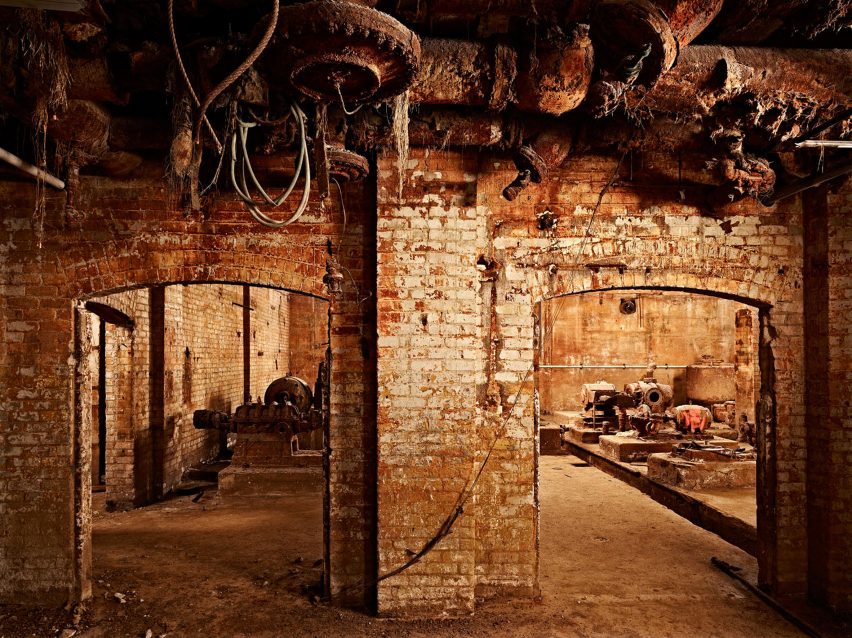
I used a Cambo technical camera with a Phase One Digital Back and Schneider Lenses. To this day these are still the highest quality digital cameras for architectural work. The camera allows you to correct the perspective "in camera" so that lines remain parallel and you don't get convergence. And the digital backs are very high resolution; 100 megapixels but you can also slide the sensor mechanically so that you can stitch images together for massive files of up to say 200 or 300 megapixels. The prints hold up very well at large sizes and look incredible in this new book. Great detail but not overly sharpened like some digital files.
When things calm down I highly recommend visiting Detroit if you are a photographer or if you simply love architecture and history. It is a wonderful city and the people really of Detroit really are wonderful hosts. It's a city that I am very fond of.